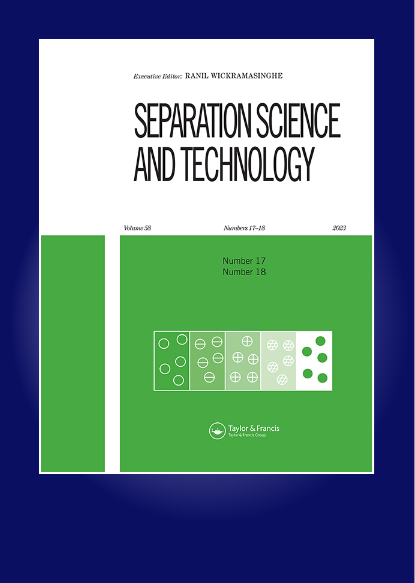双氧水氧化与电絮凝铝、铁、锌电极对城市污泥分解的比较研究
IF 2.3
4区 工程技术
Q3 CHEMISTRY, MULTIDISCIPLINARY
引用次数: 0
摘要
城市和工业废水处理厂产生大量含有高浓度有机、化学和微生物污染物的污泥。如果不完全稳定和安全排放,它们可能成为威胁土壤和水体的潜在污染源。研究了H2O2氧化和电絮凝预处理对城市污泥稳定性的影响。从H2O2投加量和污泥初始pH-H2O2两方面对H2O2氧化工艺进行了优化。采用铝电极、铁电极和锌电极进行间歇电凝实验,考察处理时间、电流密度和ph对处理效果的影响,并从污泥的增溶、分解程度和总固形物的减少等方面对效果进行比较。测定了不同操作条件下H2O2氧化和电絮凝崩解后污泥沉降速度。结果表明,铝电极的污泥分解率高达63.3%,运行成本低于铁电极和锌电极。H2O2氧化最大崩解度为50%。此外,在铝电极和铁电极上,H2O2氧化和电絮凝都提高了污泥的沉降性。本文章由计算机程序翻译,如有差异,请以英文原文为准。
A comparative study of hydrogen peroxide oxidation and electrocoagulation using aluminum, iron, and zinc electrodes for urban sludge disintegration
ABSTRACT Municipal and industrial wastewater treatment plants produce large amounts of sludge containing high levels of organic, chemical, and microbial pollutants. Unless stabilized completely and discharged safely, they may become potential pollution sources threatening soil and water bodies. This study investigated H2O2 oxidation and electrocoagulation as pretreatments to improve stabilization of an urban sludge. The H2O2 oxidation was optimized with respect to H2O2 dosage and initial sludge pH-H2O2. Batch electrocoagulation experiments were conducted using aluminum, iron, and zinc electrodes to investigate the effect of treatment period, current density, and pH. The effectiveness was compared in terms of solubilization of sludge, disintegration degree, and reduction of total solids. Sludge settling velocity after disintegration by both H2O2 oxidation and electrocoagulation were measured with respect to the operating conditions. The obtained results indicated that the high rate of sludge disintegration (63.3%) was obtained with aluminum electrodes, which has lower operating costs than iron and zinc electrodes. The H2O2 oxidation reached a maximum disintegration degree of 50%. Additionally, with aluminum and iron electrodes, sludge settleability was enhanced with both H2O2 oxidation and electrocoagulation.
求助全文
通过发布文献求助,成功后即可免费获取论文全文。
去求助
来源期刊

Separation Science and Technology
工程技术-工程:化工
CiteScore
6.10
自引率
3.60%
发文量
131
审稿时长
5.7 months
期刊介绍:
This international journal deals with fundamental and applied aspects of separation processes related to a number of fields. A wide range of topics are covered in the journal including adsorption, membranes, extraction, distillation, absorption, centrifugation, crystallization, precipitation, reactive separations, hybrid processes, continuous separations, carbon capture, flocculation and magnetic separations. The journal focuses on state of the art preparative separations and theoretical contributions to the field of separation science. Applications include environmental, energy, water, and biotechnology. The journal does not publish analytical separation papers unless they contain new fundamental contributions to the field of separation science.
 求助内容:
求助内容: 应助结果提醒方式:
应助结果提醒方式:


